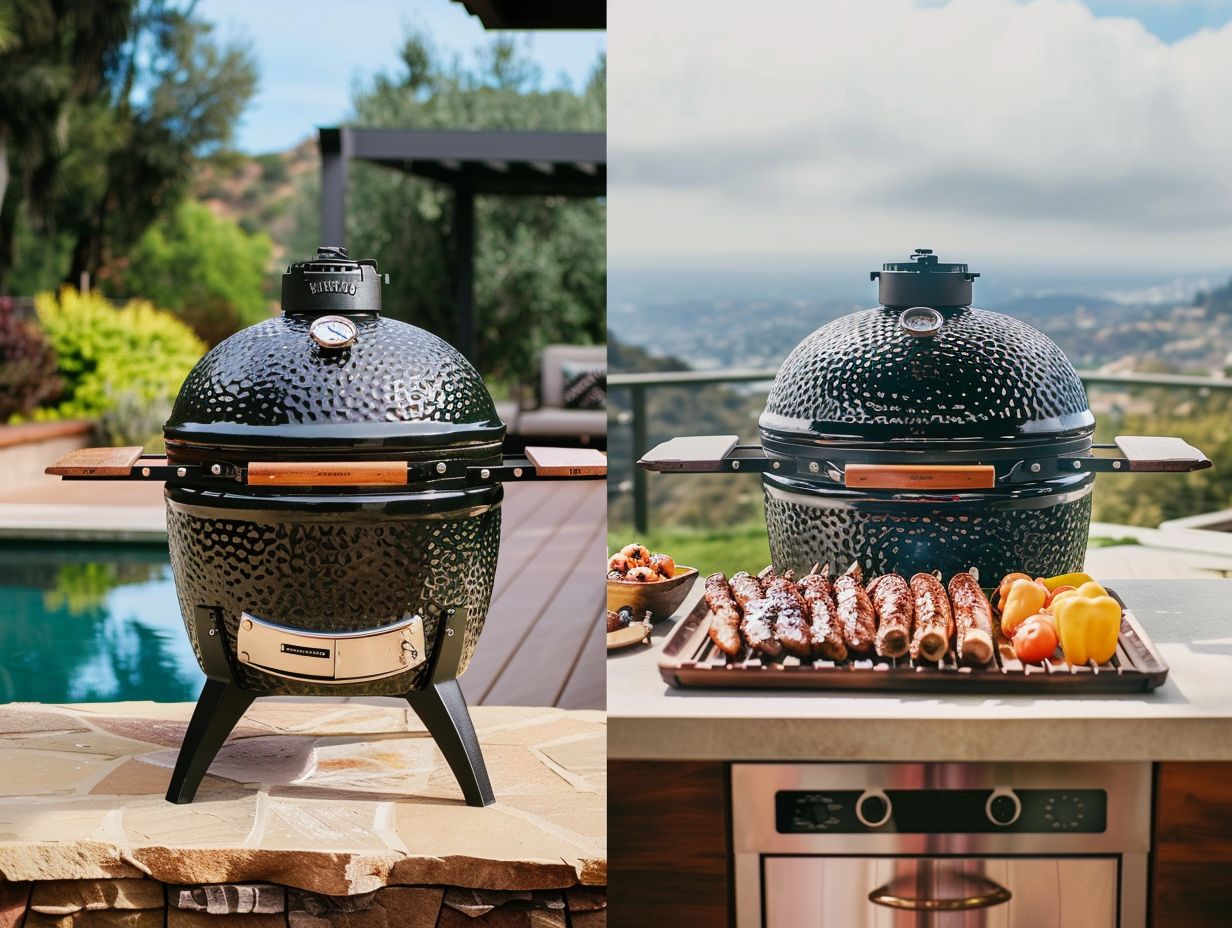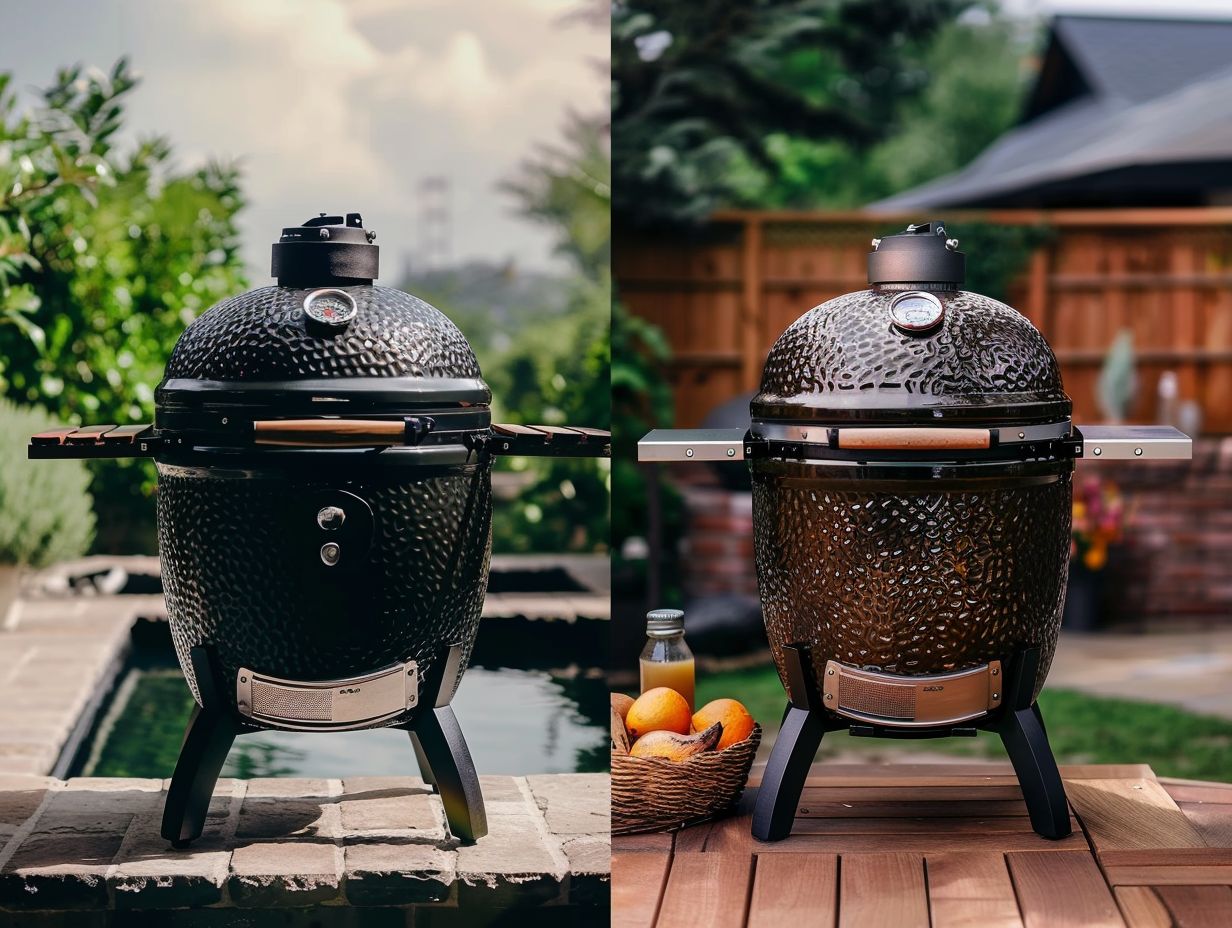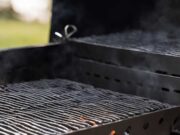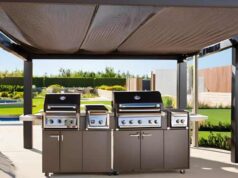When it comes to grilling, selecting the appropriate equipment can significantly enhance your cooking experience.
This discussion will explore the unique features of kamado grills compared to traditional grills, focusing on their design, construction, and cooking capabilities.
Whether you are a seasoned pitmaster or a weekend cook, understanding the key differences will assist you in determining which grill best suits your needs.
We will break down the pros and cons of each option to help guide your decision.
Key Takeaways:

- Kamado grills have a unique, egg-shaped design that allows for better heat retention and temperature control, making them ideal for slow cooking and smoking.
- Traditional grills are typically made of metal and offer quicker cooking times, but may struggle with heat retention and control.
- Kamado grills are more versatile, able to cook a wider variety of foods and use different types of fuel, while traditional grills are limited to charcoal or gas.
Understanding Traditional Grills
Traditional grills, including both gas and charcoal options, have served as a cornerstone in outdoor cooking for decades. They offer a variety of methods and techniques for grilling meats and vegetables, playing a crucial role in enhancing backyard gatherings and barbecues.
Key Differences Between Kamado and Traditional Grills
The differences between kamado grills and traditional grills are significant, affecting not only the cooking methods but also the flavor profiles, efficiency, and overall ease of use for outdoor cooking enthusiasts.
Understanding these distinctions can help you make an informed decision that aligns with your cooking preferences and requirements.
Design and Construction

The design and construction of kamado grills, featuring thick ceramic walls, provide you with superior insulation compared to traditional grills made from thinner metal materials. This unique ceramic composition not only enhances heat retention but also allows for even cooking temperatures, making it an excellent choice for both low-and-slow smoking and high-heat grilling.
In contrast, traditional grills, often constructed from lighter metals, tend to lose heat rapidly, leading to fluctuations in temperature that can impact your cooking outcomes. While metal grills may offer a lighter and sometimes more portable option, they compromise on durability and typically require more fuel to maintain consistent heat.
Ultimately, the robust ceramic structure of kamado grills delivers a more efficient cooking experience, promoting better flavor enhancement and a longer lifespan. This makes them a preferred choice for serious barbecue enthusiasts.
Heat Retention and Temperature Control
Kamado grills are designed for exceptional heat retention and temperature control, thanks to their insulated ceramic construction. This allows for precise temperature adjustments that surpass those of traditional grills, which often struggle to maintain consistent heat.
The innovative design of a kamado grill efficiently traps heat, creating a stable cooking environment that can be finely tuned. By adjusting the air intake and exhaust vents, you can easily increase or decrease the temperature to meet your specific cooking needs, whether you are searing meats at high temperatures or slow-smoking for tender results.
In contrast, traditional grills typically utilize metal surfaces that transfer heat rapidly, resulting in fluctuations that can complicate the task of achieving the ideal cooking temperature. This capability positions kamado grills as an excellent choice for culinary enthusiasts seeking perfection, providing an unparalleled outdoor cooking experience.
Fuel Efficiency and Versatility
The fuel efficiency of kamado grills is noteworthy, as they require less charcoal or briquettes to maintain high cooking temperatures, making them a more economical option for outdoor cooking compared to traditional grills.
This advantage is particularly beneficial for individuals who wish to enjoy flavorful meals without the need for frequent fuel restocking. While traditional grills often depend on propane or a significant amount of charcoal, which can accumulate in cost over time, kamado grills excel in maximizing heat retention.
This unique cooking appliance supports a variety of cooking methods, including grilling, smoking, and even baking, thereby enhancing versatility in meal preparation. Whether you are searing steaks, slow-smoking ribs, or baking homemade pizzas, the economical charcoal usage not only reduces expenses but also enables a range of culinary experiences, demonstrating that a kamado grill is a valuable investment for any outdoor cooking enthusiast.
Pros and Cons of Kamado Grills

Kamado grills, such as the well-known Big Green Egg, provide several advantages, including durability, versatility, and exceptional heat retention. However, it is also important for potential buyers to be aware of the drawbacks that may accompany these grills before making a significant investment.
Pros and Cons of Traditional Grills
Traditional grills, whether gas or charcoal, are popular for their simple design and ease of use; however, they come with limitations that can impact cooking results and overall user satisfaction when compared to kamado grills.
Frequently Asked Questions
What are Kamado grills?

Kamado grills are a type of charcoal grill that originated in Japan and are known for their egg-shaped design.
How do Kamado grills differ from traditional grills?
Unlike traditional grills, Kamado grills are made of ceramic or other heat-retaining materials, providing better insulation and temperature control.
What are the advantages of using a Kamado grill?
Kamado grills can reach higher temperatures, allowing for more versatile cooking options such as searing and smoking. They also use less charcoal and have longer burn times.
Can Kamado grills be used as a smoker?
Yes, Kamado grills can be used as a smoker due to their ability to maintain low, steady temperatures for extended periods of time.
What types of food can be cooked on a Kamado grill?
Kamado grills can cook a wide variety of food, including meats, vegetables, and even pizza. They are also great for slow-cooking dishes like ribs or brisket.
How do I maintain and clean a Kamado grill?
To keep your Kamado grill in top condition, it’s important to regularly clean the grates and remove any ash or debris. You should also ensure that all vents and seals are properly sealed to maintain temperature control.



















































